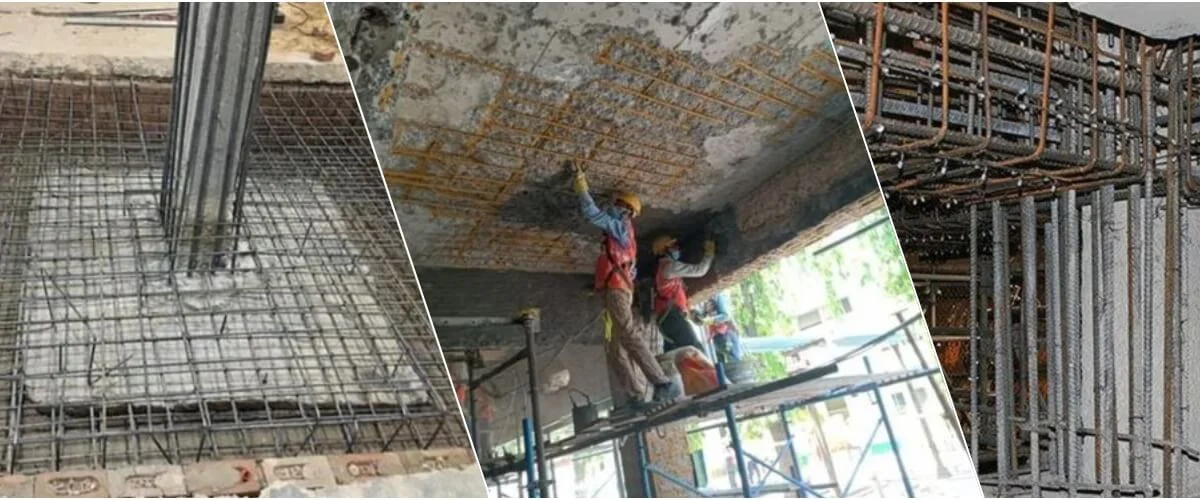Structural Repairs: Ensuring Strength and Safety

Over time, buildings face wear and tear due to factors like aging, weather exposure, seismic activity, and poor construction quality. Structural repairs play a crucial role in restoring the strength, durability, and stability of these structures. Whether it’s a residential, commercial, or industrial property, timely structural rehabilitation ensures safety and prevents further deterioration, saving both time and cost in the long run.
Importance of Structural Repairs in Building Maintenance
Ignoring early signs of structural damage can lead to severe consequences such as cracks, leakage, and even collapse. Structural repairs not only restore the integrity of a building but also enhance its lifespan. For property owners, it’s essential to schedule regular structural audits to detect hidden issues early. Professional repair services help strengthen weak structural elements like beams, columns, slabs, and foundations.
Common Causes of Structural Damage
The need for structural repairs often arises from several factors. Natural causes like earthquakes, floods, and corrosion significantly impact the durability of concrete and steel. Human-related issues such as design flaws, use of poor materials, or overloading can also weaken a structure. Identifying these causes early through professional inspection helps in planning the right repair techniques and ensuring long-term safety.
Types of Structural Repairs
There are various types of structural repairs depending on the level of damage. These include crack repair, concrete jacketing, column strengthening, beam retrofitting, and slab rehabilitation. In some cases, advanced techniques like epoxy injection, guniting, and carbon fiber wrapping are used for strengthening. The selection of methods depends on the structural analysis, material compatibility, and extent of deterioration observed during inspection.
Identifying Early Signs of Structural Issues
Building owners should regularly inspect their property for signs that indicate the need for structural repairs. Common symptoms include visible cracks on walls, sagging floors, rusting reinforcement, water seepage, and unusual vibrations. These warning signs often signal deeper structural weaknesses that require immediate attention. Early detection prevents small issues from escalating into costly and complex repair projects.
Role of Professional Structural Engineers
Professional expertise is essential for effective structural repairs. Structural engineers conduct a detailed assessment to identify the root cause of damage and design an appropriate repair plan. They use advanced tools like ultrasonic pulse velocity tests, rebound hammer tests, and corrosion mapping to analyze the building’s condition. A well-planned approach ensures the repaired structure complies with safety standards and performs efficiently over time.
Popular Techniques Used in Structural Repairs
Modern structural repairs utilize a combination of traditional and advanced technologies. Techniques like epoxy grouting and crack injection are used to seal minor cracks and restore concrete strength. For major structural damage, methods such as carbon fiber wrapping, steel plate bonding, and jacketing provide enhanced reinforcement. Guniting and shotcreting techniques are also widely used for large-scale rehabilitation of deteriorated surfaces.
Benefits of Timely Structural Repairs
Timely structural repairs prevent small damages from becoming major safety threats. Regular maintenance enhances the building’s load-bearing capacity, improves aesthetics, and increases property value. It also helps avoid expensive reconstruction costs in the future. By addressing issues like corrosion, leakage, and cracks early, property owners ensure a safe and sustainable living or working environment for occupants.
Structural Rehabilitation vs. Reconstruction
Many property owners confuse structural repairs with complete reconstruction. However, rehabilitation focuses on restoring existing structures rather than rebuilding them. It involves targeted repairs and strengthening methods to improve performance and extend life. Reconstruction, on the other hand, requires demolishing and rebuilding from scratch, which is time-consuming and costly. Structural rehabilitation is a sustainable and cost-effective alternative.
Importance of Regular Building Inspections
Regular inspections are vital to determine when structural repairs are needed. Periodic assessments by qualified engineers help in identifying early signs of damage that may not be visible externally. Inspections should include checking for cracks, corrosion, and water damage in critical load-bearing areas. Routine maintenance combined with professional evaluation ensures structural safety and compliance with building codes.
Choosing the Right Structural Repair Contractor
Selecting a qualified contractor for structural repairs is essential for long-term results. Look for firms with experience in handling diverse repair projects and using advanced repair materials. Always verify credentials, client reviews, and compliance with quality standards. A reliable contractor provides detailed reports, customized repair solutions, and ensures that work aligns with safety regulations and building codes.
Sustainable Materials and Practices in Structural Repairs
Sustainability is becoming an important focus in modern structural repairs. Engineers now use eco-friendly repair materials that minimize carbon footprint while improving durability. Products such as polymer-modified mortars, fiber-reinforced composites, and corrosion inhibitors enhance performance and longevity. Sustainable practices like waste reduction, efficient material use, and minimal demolition contribute to environmentally responsible repair work.
Future of Structural Repairs in India
With rapid urbanization and aging infrastructure, the demand for structural repairs in India is steadily rising. Cities like Mumbai, Delhi, and Chennai face increasing cases of building deterioration due to environmental stress and construction overload. The adoption of advanced repair technologies and stronger regulatory standards is helping ensure structural safety across residential and commercial sectors, emphasizing the importance of long-term maintenance.
Structural repairs are not just about fixing visible damage; they are about preserving the life and safety of buildings. Regular inspections, timely maintenance, and professional expertise can prevent structural failures and costly rebuilds. As India continues to expand its urban infrastructure, understanding and implementing effective structural repair strategies remain vital to ensure safer, stronger, and more sustainable living spaces.
- Art
- Causes
- Crafts
- Dance
- Drinks
- Film
- Fitness
- Food
- Games
- Gardening
- Health
- Home
- Literature
- Music
- Networking
- Other
- Party
- Religion
- Shopping
- Sports
- Theater
- Wellness
